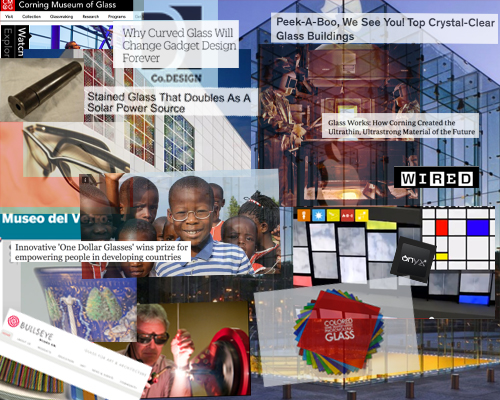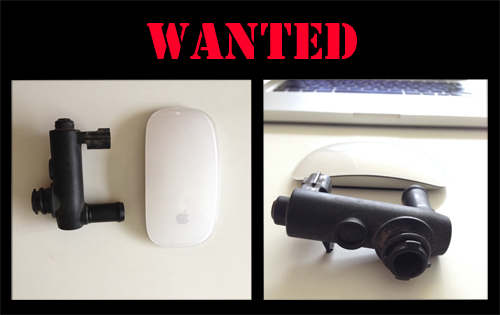| Oh my word… I found this photo on Facebook this morning. The Lego shoes were worn to the White House MakerFaire by the director of an organization for children’s librarians whose enviable real name—no joke—is Starr LaTronica. One of the first stories I wrote about energy focused on distributed generation where I learned that not only was small, modular, flexible, scalable and inexpensive the right answer for energy grids, it was the right answer almost no matter what the question. It works equally well for food systems, urban planning, transportation schemes and social networks.. Yet for all the modular genius of Lego, before today I hadn’t considered its potential for shoes. Okay, the Legos are surface decoration, but then they start behaving like Legos with little characters taking up residence. The shoe as coral reef. ••••••••••••• As a rule of thumb, the smaller the module the more flexibility it offers. The ultimate module, of course, is a molecule. It turns out that carbon, a molecule that makes life as we know it possible and one that we’ve sliced and diced for decades, has, like Legos, managed to hide potential in plain sight in the form of its skinniest version, graphene. If you take a pencil, make a mark on a piece of paper, then take tape and lift off a layer of graphite, then tape the tape to another piece of tape to peel off another layer and repeat four or five times, you get graphene. …Just for starters, graphene is the thinnest, strongest, and stiffest material in the world; it conducts heat faster than any other known material; it can carry more electricity, faster and with less resistance, than any other material; it allows Klein tunneling, an exotic quantum effect in which electrons within the material can tunnel through barriers as if they were not there. All this means that the material has the potential to be an electronic powerhouse, possibly replacing silicon chips at the heart of all computation and communication. Its extreme thinness, transparency, strength, and electronic properties mean also that it may end up being the material of choice for touch interfaces of the future, not just the touch screens we are used to but perhaps bringing touch sensitivity to whole objects and even buildings. But its most intriguing claim to fame is that it is a two-dimensional material. This doesn’t mean it has no thickness, but rather that it cannot be made any thicker or thinner and be the same material. This is what Andre’s team showed: add an extra layer of carbon to graphene and it goes back to being graphite, take a layer away and the material does not exist at all… — Mark Miodownik, Stuff Matters A two dimensional material? Whoa… The discovery of graphene set off a hunt for what other magic could be found in the itty bitty and the discovery of carbon nanotubes. Miodownik’s book came out this month. The following news story came out just the other day: Move over, silicon, there’s a new circuit in town. By creating a sort of yin/yang mash up of carbon nanotubes and something called IGZO thin films, researchers at USC were able to create a game-changing hybrid circuit. The potential applications for this kind of integrated circuitry are numerous, including Organic Light Emitting Diodes (OLEDs), digital circuits, radio frequency identification (RFID) tags, sensors, wearable electronics, and flash memory devices. Even heads-up displays on vehicle dashboards could soon be a reality. The new technology also has major medical implications. Currently, memory used in computers and phones is made with silicon substrates, the surface on which memory chips are built. To obtain medical information from a patient such as heart rate or brainwave data, stiff electrode objects are placed on several fixed locations on the patient’s body. With this new hybridized circuit, however, electrodes could be placed all over the patient’s body with just a single large but flexible object… "…The possibilities are endless, as digital circuits can be used in any electronics," Chen said. "One day we’ll be able to print these circuits as easily as newspapers." Hours of fun! Now the race is on to print electronics. Closer to home, a team at Northwestern has come up with pretty nifty solution to make graphene ink: High-quality inkjet-printed graphene circuits: One step closer to foldable computers. With so much is going on in the field, there are trade shows. The big one in the US is in Silicon Valley this fall: Printed Electronics USA 2014. Note the “co-located events” on Wearable Technology, 3D Printing, Graphene & 2D Materials and Energy Harvesting Storage. This is the kind of conference that needs to start happening more in Chicago as the city grows as a digital manufacturing research hub. This is cross-sector, cross-disciplinary, paradigm-shifting innovation. Despite visions of Jeff Bezos hawking Amazon clothes wired to ring up sales for Kleenex the instant a sneeze is sensed, the possibilities are pretty wondrous (Really, who needs a snoopy phone when you can dress your customer for 24/7 consuming? Think of the data collection…). Extra points for figuring out how to wire Ms. LaTronica’s shoes… — J.A. Ginsburg A two-fer good thing! Planning on purchasing a physical copy of Stuff Matters and want to support a fabulous new indie bookstore? Check out Bookends and Beginnings in the old Bookman’s Alley space in Evanston—literally in an alley off Sherman Avenue (very Harry Potterish in terms of unexpected charm). This is a book store the way book stores used to—and really ought—to be. |
|
0 Comments
|
BackgroundDot to Dot grew out of the TrackerNews Project, a demo news aggregator developed for InSTEDD, an independent spin-off of Google.org's humanitarian practice that focused on health issues, humanitarian response and technology. Archives
• Bats, Trees And Bureaucrats: Ebola And How Everything, Positively Everything, Connects • Scrubba Dub Carlos and the Big Bad Enterovirus: Why Sneeze When You Can Sing? • Ebola, Bats and Déjà Vu All Over Again • Scaling Good: Project Frog’s Buildings And The Kitchen Community’s Learning Gardens • Thumbs Up And High Fives: Evolution, Hands And 3D Printing • Legos, Makers, Molecules, Materials And The Very Big Business Of Small Things • Solid: When Bits and Atoms Dance • Science Hack Day Chicago 2014: Reinventing The Space Suit, Cosmic Biomicmicry And The Joy Of Thinking Different • The Motors of August Cicadas • Mulling Snow, Climate, Pain Points, Bootstrapping And Chicago’s Advantage • Glass, Tech And Civilization: The Material That Makes Just About Everything Better • A Tale Of Two Maps And Why You Can’t Teach An Old Grid New Tricks • When Bad Things Happen To Good Content: Form(At), Function, Perspective And Possibilities • The Sum Of Its Parts: Autozone Meet Autodesk (Please) / On Supply Chains, Carbon Footprints And How 3D Printing Can Change The Game (Again) • It Takes An Economist: Tallying Natural Capital • Beyond Measure: Da Vinci’s Genius, Peripheral Vision, The Prepared Mind, Metric Traps And Hacking The Filter Bubble A Solstice Encore: Imaginary Carl Sagan, A Holiday Mix Tape And The Tannahill Weavers Categories
All
|






 RSS Feed
RSS Feed







